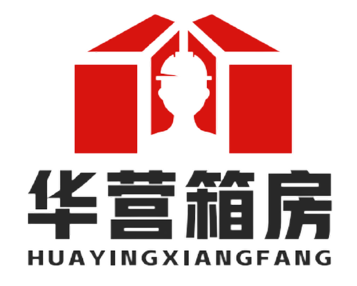Prefabricated fiberglass houses represent a revolutionary approach to modern housing, combining durability, energy efficiency, and rapid installation. These innovative structures offer homeowners a cost-effective, sustainable alternative to traditional construction, with customizable designs and minimal maintenance requirements. Discover why fiberglass prefabricated homes are becoming increasingly popular among eco-conscious buyers and those seeking efficient housing solutions.
In today’s fast-paced world, the housing industry continues to evolve, offering innovative solutions that address modern needs for efficiency, sustainability, and affordability. Among these innovations, prefabricated fiberglass houses have emerged as a game-changer, revolutionizing how we think about home construction and ownership.
Understanding Prefabricated Fiberglass Houses
Prefabricated fiberglass houses are dwellings manufactured off-site in controlled factory conditions, using fiberglass as the primary structural material. Unlike traditional stick-built homes, these structures are constructed in modules or panels that are then transported to the final location for assembly. The use of fiberglass – a composite material made of fine glass fibers reinforced with plastic – provides exceptional strength, durability, and insulation properties.
What sets these homes apart is their unique combination of rapid construction time, structural integrity, and design flexibility. They can be customized to various architectural styles while maintaining consistent quality through factory production processes.
The Remarkable Benefits of Fiberglass Construction
The advantages of choosing a prefabricated fiberglass house are numerous and compelling:
- Exceptional Durability: Fiberglass is resistant to rot, rust, corrosion, and pest infestations, making these homes incredibly long-lasting.
- Energy Efficiency: The inherent insulation properties of fiberglass help maintain consistent indoor temperatures, significantly reducing heating and cooling costs.
- Rapid Installation: As demonstrated in this installation video, prefabricated fiberglass houses can be assembled in a fraction of the time required for traditional construction.
- Low Maintenance: Fiberglass surfaces are easy to clean and don’t require regular painting or sealing like traditional materials.
- Environmental Sustainability: The manufacturing process generates less waste, and the energy efficiency reduces the home’s carbon footprint over its lifetime.
The Engineering Behind Fiberglass Homes
The structural integrity of prefabricated fiberglass houses comes from advanced engineering techniques. As shown in this structural diagram, these homes often feature innovative designs like double-wing structures that enhance stability while allowing for spacious interiors.
The manufacturing process involves creating molds for each component, applying layers of fiberglass material with resin, and then curing them under controlled conditions. This method ensures precision, consistency, and quality that can be difficult to achieve with on-site construction.
Installation Process: From Factory to Foundation
One of the most impressive aspects of prefabricated fiberglass houses is the speed and simplicity of installation. After the site is prepared and a foundation is laid, the prefabricated components are transported to the location. The assembly process typically involves:
- Positioning the main structural components
- Connecting the sections using specialized joining systems
- Installing utilities and interior finishes
- Completing exterior connections and weatherproofing
Depending on the size and complexity of the design, this entire process can be completed in as little as a few days to a couple of weeks, compared to several months for traditional construction.
Design Versatility and Customization
Contrary to what some might assume, prefabricated fiberglass houses offer tremendous design flexibility. Homeowners can choose from various architectural styles, including modern, contemporary, traditional, and even rustic designs. Interior layouts can be customized to accommodate specific needs, whether it’s an open-concept living space, multiple bedrooms, or specialized areas like home offices or studios.
Exterior finishes can also be customized with different colors, textures, and additional materials like wood or stone accents to create a unique aesthetic that complements the surrounding environment.
Cost Considerations and Long-Term Value
While the initial cost of a prefabricated fiberglass house may be comparable to or slightly higher than some traditional construction methods, the long-term value is exceptional. Reduced energy bills, minimal maintenance costs, and the durability of the structure mean that homeowners typically save money over the life of the home.
Additionally, the speed of construction can result in significant savings on labor costs and reduce the financial burden of extended construction periods, such as temporary housing or construction loan interest.
Environmental Impact and Sustainability
For environmentally conscious homeowners, prefabricated fiberglass houses offer numerous sustainability benefits. The factory-controlled manufacturing process reduces material waste by up to 50% compared to on-site construction. The energy efficiency of these homes means lower energy consumption throughout their lifespan, reducing the overall carbon footprint.
Furthermore, many manufacturers incorporate recycled materials into their fiberglass composites and implement sustainable practices throughout the production process.
Conclusion: The Future of Housing
Prefabricated fiberglass houses represent more than just an alternative building method – they offer a glimpse into the future of housing. With their combination of speed, efficiency, durability, and sustainability, these homes are ideally suited to meet the challenges of 21st-century living.
Whether you’re building a primary residence, vacation home, or auxiliary dwelling, considering a prefabricated fiberglass house could provide the perfect balance of quality, value, and peace of mind. As this technology continues to evolve, we can expect even more innovative designs and applications that will further transform our concept of home.
